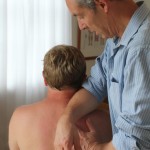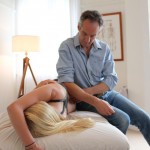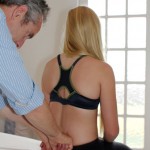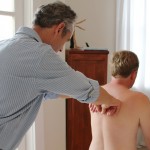FAQs
What happens in a session of Rolfing?
At the beginning of a series of Rolfing, you will be asked about your history so far, including your work, sports injuries and other important events for you. Your structure and movement will be evaluated and photos may be taken for further reference.
You will then be asked to lie on a low table and the Rolfer will use a kind of slow deep pressure to begin freeing the fascial restrictions. You may be asked to move the segment being worked on, or to breathe into that area. This combination of applied pressure and synchronised response frees and repositions the connective tissue and begins aligning the bodyâs segments. You may be asked to sit or to stand, or even walk, so that both you and the Rolfer can evaluate changes as they happen.
Who can it help?
Almost anyone, and at any age, can discover the benifits of Rolfing. Athletes, dancers, musicians, people from all walks of life come to Rolfing to find relief from pain and limitation and to improve their daily function and awareness. Chronic pain sufferers, or those people in physically or emotionally demanding situations often find a new and more effective way of relating, moving and being in their environment.
Do you feel down, or up? Heavy, or light? High, or low? this is the language of our relationship to gravity. Rolfing aims for ease in that relationship. Our physical body can actually lift when at ease in gravity.
Why ten sessions?
Each of the sessions in Rolfing has a specific anatomical focus, gradually building a whole. See article ‘Rolfing: Posture Patterns and the Effort of Being Upright’ for a detailed breakdown of each session.
How frequent are the sessions?
Usually, sessions are spaced a week to two weeks apart. This is very much a process, and all the sessions are connected, so it is best not to drag it out too long. At the same time, a week is usually useful to integrate each session.
How much does Rolfing cost?
Session prices vary between Rolfers, according to the area, and the Rolfer’s experience. Fees are usually between $75 and $120 per session.
What effects can I expect?
As the body becomes better balanced through Rolfing, it expends less of it’s vital energies dealing with gravity. This improved efficiency is often experienced as a higher level of alertness and vitality. Movement becomes easier and overall personal functioning tends to improve.
People who have been Rolfed stand and move with more surety and grace than before. Improved joint range and suppleness, less pain and tension are common results
As the old holding patterns are released, bones and muscles are free to resume their most effective positions and power. You will sit and stand straighter and easier. You will breathe more easily and fully, and look and feel lighter.
Many clients have reported that they have gained a new outlook on life, as the old patterns of movement and restrictions have dropped away, and a new level of behavior and wellness became naturally available. Feelings of security, groundedness, more centredness and emotional balance can emerge.
Can Rolfing help with stress?
Getting in touch with your body and becoming more aware of how you hold yourself in different situations already begin to change the accumulation of stress in your system. As Rolfing frees up those old holding patterns that emotional history may also be released. You become more responsive than reactive, living more in the present than before and acting with more awareness. Note that react means repeat the act, where as respond means act responsibly.
Rolfing is often used in conjunction with other emotionally focussed therapies. As the mind becomes more free and open, it is useful to release the body as well. In fact, the two are one, show me a mind without a body. Even the language we use to describe our emotional states uses gravity. We feel high or low, up or down, things become a drag, heavy, man! We have the weight of the world on our shoulders, we can’t stand on our own two feet, we have lost it.Who comes for Rolfing?
Athletes, dancers, musicians and others interested in improved performance. People suffering chronic pain, from sciatica and back pain, knee, hip, shoulder problems etc. People simply not coping with the stresses of their lives, be they physical or emotional.
Those interested in their own personal growth, maybe already in therapy with a psychologist or psychiatrist. Students and teachers of Yoga and Meditation.
People from all walks of life and ages come to Rolfing, not only for relief from their pain and stress, but also for improved performance in their professions and their daily lives.
How does Rolfing feel?
The area being worked on can vary in sensation from pleasurable to sometimes even momentarily painful, depending on the buildup of tissue, strain and stress, injury and other factors. While the work is sometimes uncomfortable, this generally stops as soon as the Rolfer releases the pressure.
You may feel a stretching sensation, or there may be referred sensation to another area of the body. Clients often use such words as lighter, softer, longer, fuller or easier to describe the changes that they feel.




